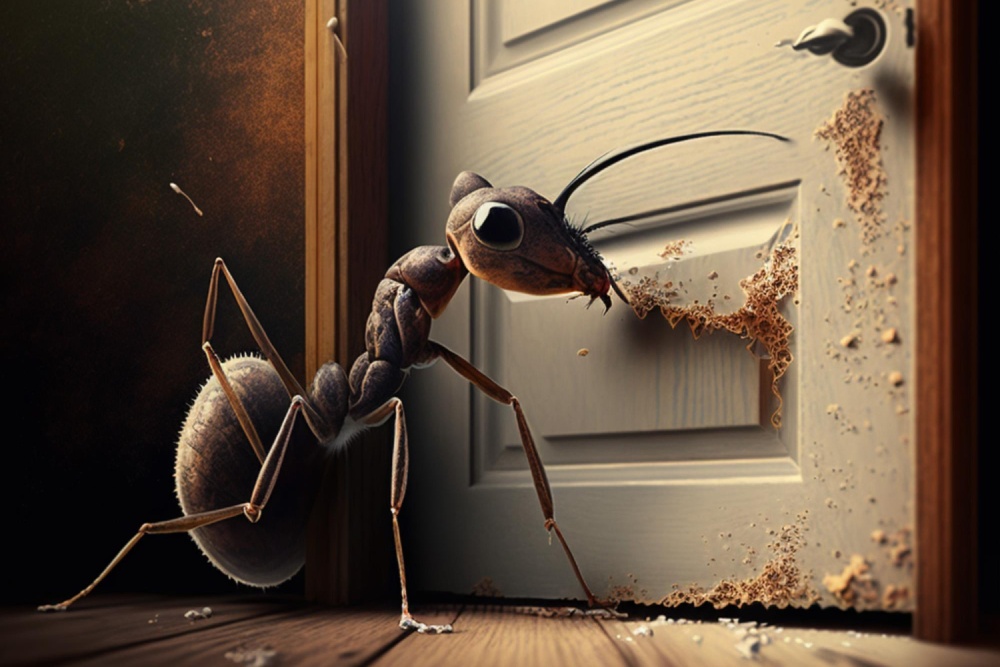Beneath the Surface: A Closer Look at Termite Inspections and Procedures
- Apr 17, 2024
Table of Contents
- Introduction
- The Inspection Process
- What You Can Do to Assist the Inspection
- Frequently Asked Questions

Introduction:
Does your home contain termites? This is a question all homeowners need to ask themselves regularly. Termites can cause thousands of dollars of damage if an infestation remains unchecked. In the worst case, a house could be so severely damaged that it becomes uninhabitable. The only way to know for sure if your home is infested is to have a professional termite inspection done. Forget DIY methods – they are never effective and a false negative result could leave you feeling safe while your house continues to suffer. If termites are found, there are several ways to protect your home including drywood termite treatment, termite treatment without tenting, and other options. Your local termite treatment specialist will be able to tell you which treatment is right for your home.
The Inspection Process
Professional termite inspectors are trained to spot the signs of an infestation that a homeowner will easily miss. They look for signs of termite activity and also for signs of past infestations and damage that may have occurred. Finding old damage and getting it repaired before it becomes worse can save you a lot of money by way of lower repair bills. Inspectors will also look for places where termites are likely to gain (or have gained) entry into the building. The inspectors will also look for any issues that may attract termites. This includes structural issues that allow termites to enter, areas of dampness or where water has collected (or is likely to pool) both in and around the house. The inspection process will also cover other potential problem areas such as shrubbery that is too close to sidings, mulch that is around the foundation, deck supports that are in direct contact with the earth, etc. There are also location and building-specific issues that will be inspected.
Also Read: How to Get Rid of Termites
What You Can Do to Assist the Inspection
Getting your home ready for a termite inspection will allow the process to be completed faster. You can:
- Clear out the space under the kitchen and bathroom sinks so that any leaks or excess moisture can be spotted.
- Empty the garage as far as possible. Leave 2 or 3 feet from the walls clear so that the areas where the walls and floor meet can be inspected easily.
- If you have a basement, attic or crawlspace, remove any objects that will prevent the inspectors from accessing these areas.
- Trim any plants and shrubs that could prevent the inspectors from getting a good look at the foundation.
- Keep children and pets away from areas being inspected so that they do not get in the way and more importantly, so that they do not get hurt.
Unless you are a billionaire with several homes to live in, the one you have is all there is. You need to keep it safe which is why you should go in for homeowner’s insurance, security systems, smoke detectors, and so on. Protecting the house from termites is equally, if not more important, especially if you live in Southern California which is a high-risk area for termites. Contact a professional termite exterminator in Southern California to keep your home and family safe.
Frequently Asked Questions
1. How do I know if my home has termites?
The only sure way to know is to have a professional termite inspection done. DIY methods are ineffective and can give false results.
2. What happens during a termite inspection?
Trained inspectors look for signs of termite activity, past damage, entry points, and conditions that attract termites. They'll examine areas like the foundation, attic, and basement.
3. How can I prepare for a termite inspection?
Clear out spaces under sinks, empty the garage near walls, remove obstacles in basements or attics, trim plants near the foundation, and keep children and pets away during the inspection.
4. What treatments are available if termites are found?
Treatment options include drywood termite treatment, termite treatment without tenting, and others. Your local specialist can recommend the best option for your home.
5. Why is termite protection important, especially in Southern California?
Termites can cause extensive damage, potentially making a house uninhabitable. In high-risk areas like Southern California, termite protection is crucial for keeping your home and family safe.

Comments - 0